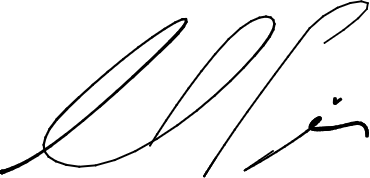Everything I do comes back to people. Take care of them, understand what makes them tick, and you’re most of the way to solving any problem worth solving.
This might seem obvious, but it’s not how most organizations actually operate. We optimize for processes, metrics, and systems while forgetting that humans are what make everything work. I learned this early, growing up in the Bronx where both my parents worked full-time and we still needed government assistance to get by.
I spent my teenage years working at my dad’s small business, learning about customer service and what it takes to keep people happy while balancing schoolwork. Those experiences taught me that talent and determination matter, but sometimes you need help to get past that initial hurdle that lets you show what you can do. Too much potential gets wasted because people never get that chance.
Connection is everything
Having grown up in a Dominican and Puerto Rican household, I’ve learned that dancing isn’t entertainment. It’s how you connect. For nearly two decades, I was a professional Latin dancer, teaching classes, performing at Madison Square Garden and The Chicago Theatre, competing internationally. Dancing taught me something crucial: you can’t fake connection. You either feel the rhythm together or you don’t. You either trust your partner or you fall.
That same principle applies everywhere. In engineering teams, you can see it immediately when people are really collaborating versus just going through the motions. In product development, you know when you’re actually solving customer problems versus building features. In leadership, you can tell when someone genuinely cares about their people versus managing by spreadsheet.
This is why I’ve traveled to dozens of countries, lived on different continents, learned languages. Every culture has figured out different ways to build connection, solve problems, create meaning. A street vendor in São Paulo thinks about customer experience differently than a banker in London, but both understand what it takes to make people feel valued. I collect these insights everywhere I go.
Growth never stops
The other thing I’ve learned is that people need to grow. Not climbing corporate ladders or hitting arbitrary milestones, but actually becoming more capable, more curious, more themselves. When that stops happening, everything else breaks down.
This is why I read constantly, why I’m always experimenting with new approaches, why I treat every project as a chance to learn something. My son Lucien is eight and already diving into cosmology, nuclear physics, and Theory of Everything (yes, really). My daughter Cassia is five and asks questions that surprise and deliught me and make me see the world differently. They remind me every day that curiosity is natural, and it’s my job to protect that in myself and everyone I work with.
Learning means staying uncomfortable. It means admitting when you don’t know something. It means being willing to be bad at new things. Most organizations punish this kind of vulnerability, but the best teams I’ve built thrive on it.
Building things that last
All of this connects to something deeper: I want things to last. Our relationships, our communities, our planet, our bodies. This isn’t about being granola or preachy. It’s about being intentional.
My wife and I are building a small homestead in Madrid. We have chickens, fruit trees, a growing garden. We’re learning where our food comes from, what our bodies actually need, how to be less dependent on systems that don’t serve us well. It’s satisfying work, and it keeps us connected to something real while I’m building digital products all day.
This connects to everything else I do. Sustainable systems don’t just apply to agriculture. They apply to teams, organizations, technical architecture. The same principles that make a garden thrive make engineering teams thrive: diversity, feedback loops, adaptation, care.
What this means for working together
When I work with people, I’m not just thinking about deliverables or quarterly goals. I’m thinking about whether we’re building something that will still matter in five years. Whether people are growing. Whether we’re solving problems that actually matter to humans.
I bring this same perspective to everything: technical decisions, team design, product strategy, organizational transformation. The best solutions are usually human solutions. The most elegant code is code that other people can understand and build on. The strongest organizations are the ones where people genuinely want to be there.
This isn’t soft thinking. It’s practical. Teams that trust each other move faster. Products built with real human insight last longer. Organizations that invest in people adapt better when everything changes.
If you’re looking for someone who can optimize your metrics and hit your deadlines, plenty of people can do that. If you want someone who thinks about the humans behind those numbers and builds things that compound over time, let’s talk.
